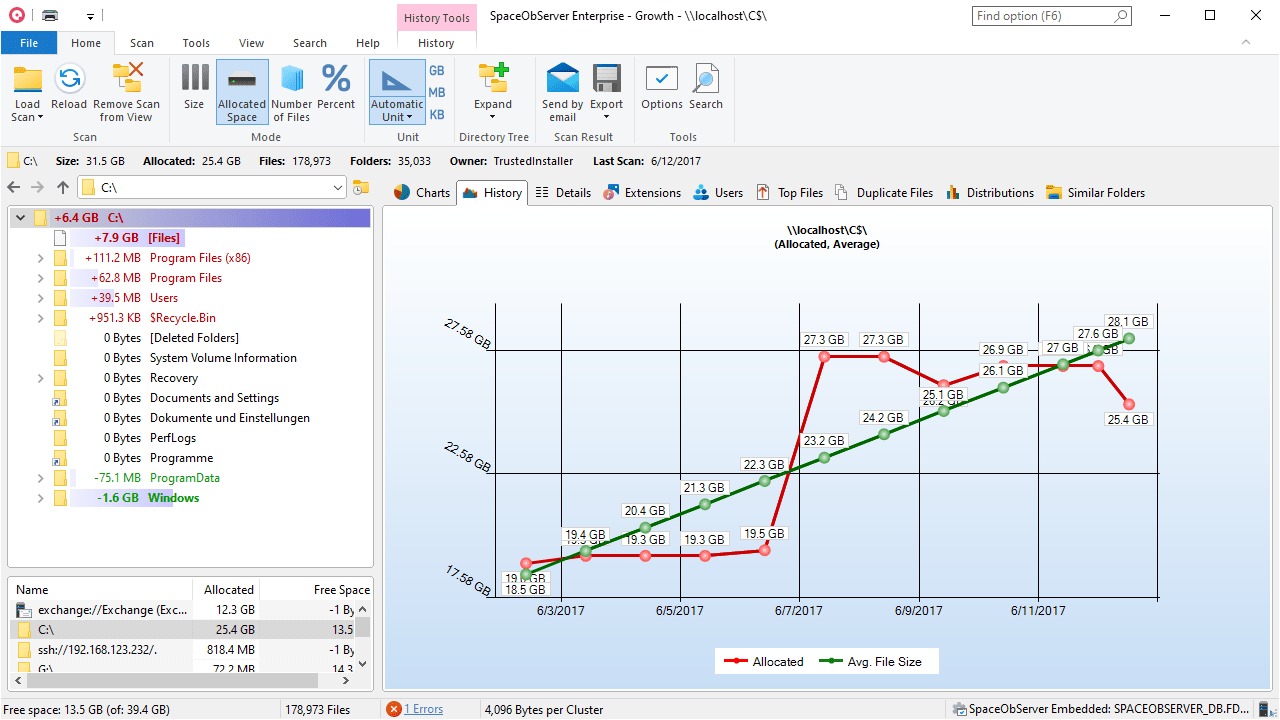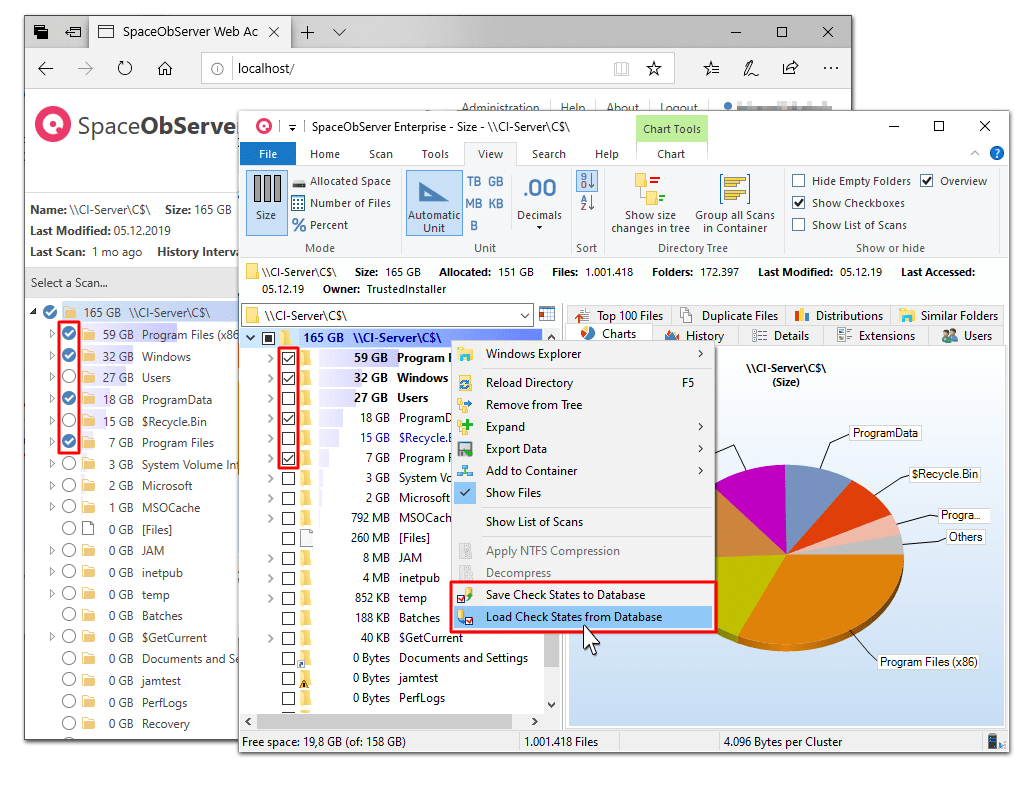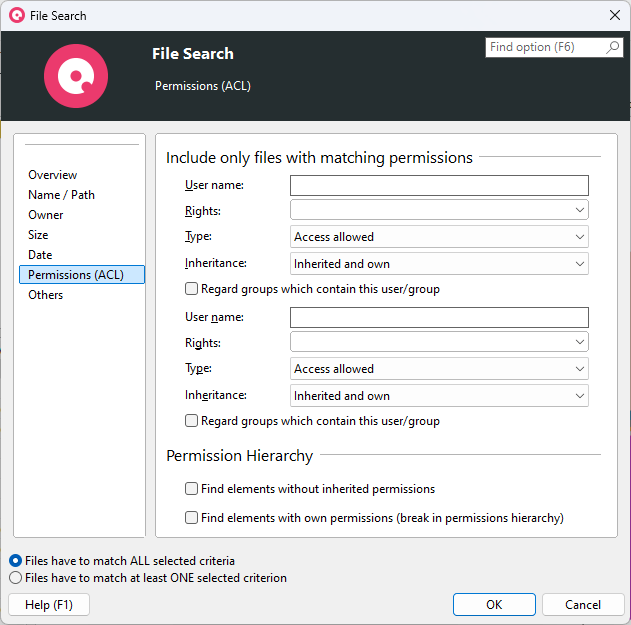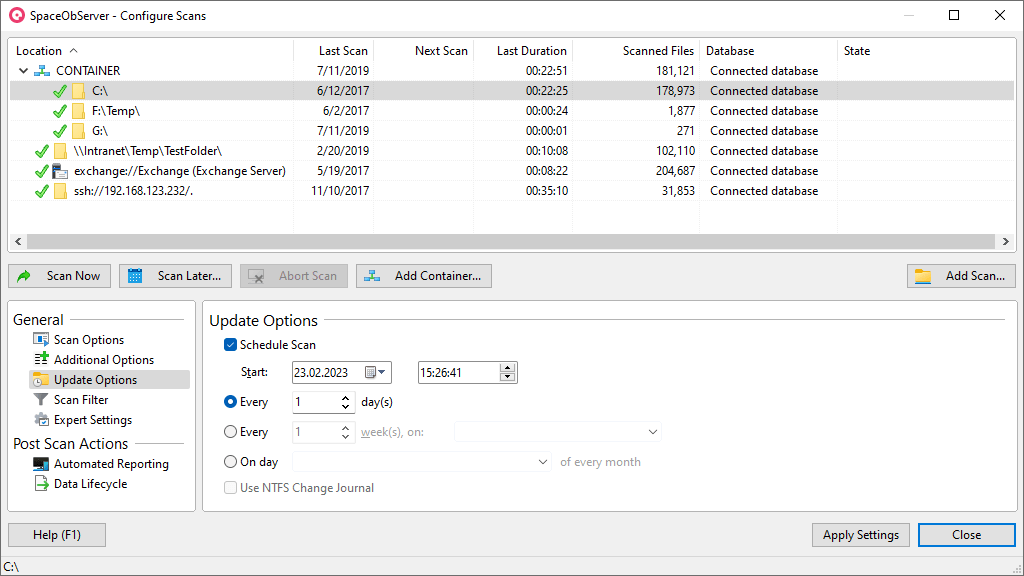Why SpaceObServer Is Exciting For You
TreeSize's big brother can do more

As the person responsible for IT, it is your job to keep track of the storage space on your company's servers. You also need to keep track of authorizations, legal requirements and much more.
With TreeSize, we already provide you with a ready-to-use tool to perform tasks like these. But what if your infrastructure or requirements continues to grow?
You may therefore be reaching a functional or performance limit with TreeSize in a scaling company environment.
If you have new requirements, it's worth thinking outside the box: with SpaceObServer, we offer you new exciting perspectives for continuous storage space monitoring and efficient data lifecycle management.
In this article, you will learn when it is helpful to get even more out of your existing infrastructure with SpaceObServer:
Let's take a closer look!
Limits of TreeSize in scaling environments
Let’s first look at the known problems that customers like you will face sooner or later in a scaling business environment.
TreeSize is particularly suitable for the rapid deployment and selective analysis of data. However, with TreeSize you will reach infrastructural limits, especially with larger data volumes.
The reason: TreeSize uses the underlying RAM as an ad-hoc tool for its data analysis.
This makes it very fast. However, it can still take a long time to scan several million files on a file server, during which TreeSize must remain open.
In addition, depending on the statistics to be generated, TreeSize uses a large amount of your RAM, which may not be able to cope with the data.
Scaling environments require a more robust solution that is designed to monitor storage space in the medium to long term.
SpaceObServer: Your TreeSize for large systems
With SpaceObServer, we offer an answer to this challenge. With our database-centered approach, SpaceObServer is our TreeSize for large systems:
SpaceObServer is equipped for the medium to long-term monitoring of distributed data volumes with the familiar look and feel of Windows File Explorer that you already know from TreeSize.
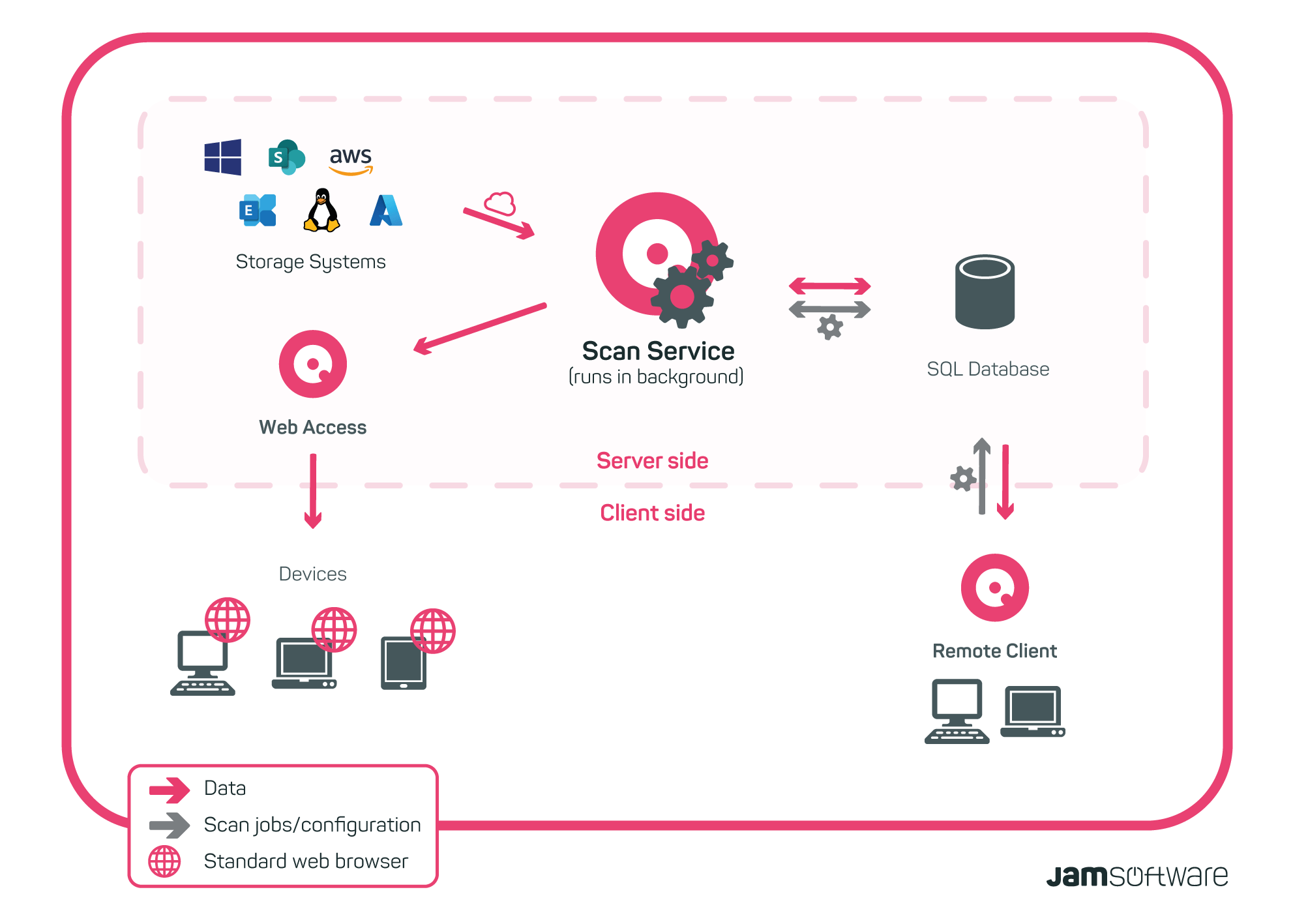
Retrieving data from your own database instead of from your network reduces the load on your systems. SpaceObServer takes an incremental approach here:
First, all data is written to the database in the initial scan - the first scan therefore takes longer than with TreeSize. From the next scan onwards, however, SpaceObServer only saves changes to the last status, which speeds up the storage scan enormously and enables you to pull the results of the last scan from the database within seconds.
Careful configuration is crucial for optimum performance. You can find helpful tips the SpaceObServer setup guide.
So much for the technology. But what distinguishes SpaceObServer from TreeSize?
Monitor server storage continuously
The most important difference between TreeSize and SpaceObServer is the background service with which SpaceObServer can perform scans continuously.
Once set up, SpaceObServer always provides current and historical analysis data for the systems of your choice, which can be retrieved immediately from your own database.
Creating continuous scans is easy: with the help of customized schedules, you can determine exactly when you want to scan one or more of your storage systems - for example, during non-office hours.
Following each automatic scan, you can also automatically create a storage space report and have it sent to you by email, for example. As usual with TreeSize, the level of detail and the file format of the report can be defined individually.
Efficient data management
With SpaceObServer it is possible to manage data on a large scale and collaboratively.
Are you about to migrate your company data to SharePoint, for example? With SpaceObServer, you can simply clean up your existing data and prepare it for the cloud, as you are used to with TreeSize, so that you don't have to take any legacy data with you into the cloud.
For example, it is advisable to check for duplicate files and similar folder structures that may indicate redundancies.
With SpaceObServer, you can also easily collaborate with your specialist departments to find out more about the relevance of the content of your data.
With the help of the Web Access Add-On, your colleagues can mark outdated data on the file system via their browser and release it for deletion. This allows you to save space on your SharePoint without risking data loss.
The actual move is then carried out using the file operations that you are already familiar with from TreeSize.
Use these to move your directory structures securely to their new cloud home. All actions can be logged in a log file. If something goes wrong, all changes can be undone with an undo script.
Ensure compliance
You can easily automate your data lifecycle management with SpaceObServer: You can determine exactly what should happen to certain data after a scan.
For example, have your HR department regularly check personal data from the application process. Are there any application documents in the designated directories that are older than the permitted two years?
SpaceObServer can move such data records to an archive according to rules you define, delete them immediately and perform other actions. This ensures that your company is GDPR-compliant at all times.
SpaceObServer also helps you audit the access permissions of your employees: Get detailed information in reports about which actual and inherited NTFS permissions exist for specific folders or files.
Ensure your compliance by displaying the directory structures to which certain users or AD groups have access, for example to prepare a data protection case.
SpaceObServer offers a wide range of options for this with its extensive authorization search.
Uniform management for various storage systems
Keeping an eye on distributed storage systems can be challenging. As with TreeSize, SpaceObServer makes it possible to analyze a wide range of different systems in a uniform interface.
However, SpaceObServer also creates order when organizing several ongoing scans: Using the container view, individual scans of the same and different systems can be merged into groups.
This allows you to set up your own logic, for example to distinguish your on-premises storage from your cloud systems.
In addition to the rough organization of your various scans, you can also easily check their status. Here you can see how many files are included in a scan, when a scan was last run and which scans are currently interrupted by an error.
TreeSize and SpaceObServer: Which is better for whom?
So much for the differences between TreeSize and SpaceObServer. But which solution is best for your company under real conditions?
Let's take a look at two fictitious scenarios and discuss together when TreeSize is the better choice and when a company would be better off relying on SpaceObServer.
TreeSize: Ideal for compact teams with occasional memory analyses
Let's take the example of Creative Pulse, a compact team of 30 employees that specializes in digital marketing and video production.
With a small IT setup that includes on-premises servers, SharePoint and Azure, TreeSize is the best choice. Why?
TreeSize is ideal for occasional memory analysis and clean-up operations. It takes 30 seconds to install and then is ready to go.
Its user-friendly interface, which is similar to Windows File Explorer, requires minimal IT knowledge and is therefore perfect for teams that do not have specialized IT expertise.
What's more, TreeSize effectively manages both on-premises and cloud storage while remaining budget-friendly, making it a cost-effective solution for teams like Creative Pulse.
SpaceObServer: The solution for dynamic, growing companies
Contrast this with CodeCrafters, a dynamic, medium-sized software company with 150 employees. Here, they manage a mixture of on-premises and SharePoint servers.
SpaceObServer is the preferred solution in this case. With its ability to handle complex data sets seamlessly across multiple environments, SpaceObServer is ideal for continuous monitoring and reporting - essential in a rapidly changing development landscape with a large demand for storage space.
Automated reports support project management and resource planning, while SpaceObServer's scalability keeps pace with the company's growth.
Try SpaceObServer for free!
In this article, we have looked in detail at the question of why it might be worthwhile for you to take a closer look at SpaceObServer if you are currently reaching the limits of TreeSize.
Have we aroused your curiosity? Then try SpaceObServer free of charge and without obligation. We would also be happy to support you with the initial setup of SpaceObServer. Book Live Support with our product team and we will help you!
Do you have any further questions? Contact us, we will be happy to help you!


